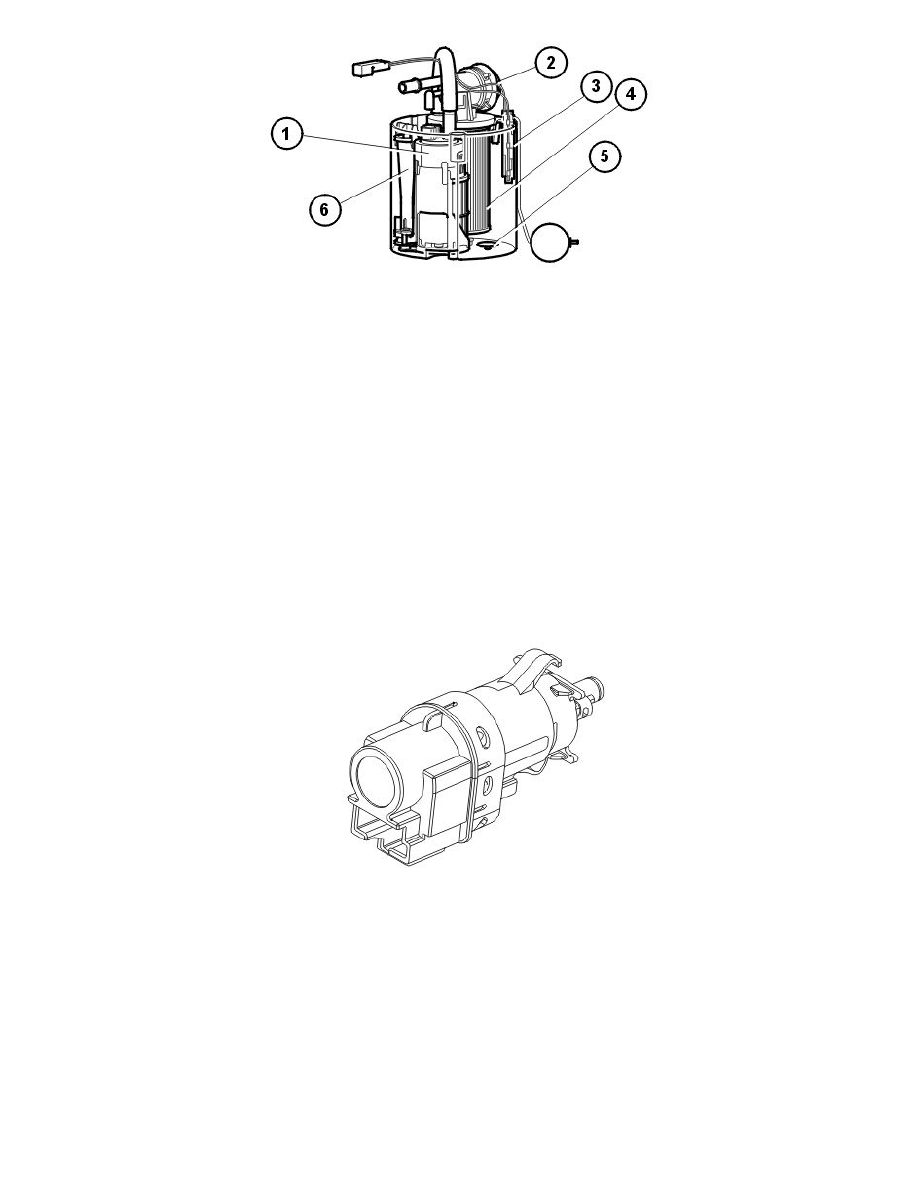V50 L5-2.4L VIN 39 B5244S7 (2005)

The function of the fuel pump is to ensure that the pressure is correct at the delivery lines for the injectors when requested by the fuel pump control
module.
The fuel pump consists of:
1. An electrical pump with an integrated safety valve
2. A pressure equalization valve. This valve equalizes rapid pressure peaks which occur, for example, when the injectors close during engine braking.
It also contains a non-return valve which ensures that the pressure in the system does not drop when the engine is switched off
3. Fuel level sensor
4. Fuel filter, cannot be replaced separately
5. Relief valve, releases fuel into the pump housing
6. Ejector pump, continuously fills the pump housing with fuel. The fuel always flows from the fuel pump through the ejector and back to the pump
housing.
The fuel pump is supplied with battery voltage by the fuel pump control module and is grounded in the car body via the fuel pump control module.
The engine control module (ECM) has diagnostics for the fuel pump function to ensure that the pressure is correct. See also: Fuel pressure regulation,
diagnostics See: Powertrain Management/Computers and Control Systems/Description and Operation/Fuel Pressure Regulation, Diagnostics
The fuel pump can be activated and its status read off using VIDA.
The pressure in the fuel rail can be measured by connecting a manometer to a nipple. This nipple is on the right-hand end of the fuel rail.
Stop lamp switch
The task of the stop lamp switch is to provide the engine control module (ECM) with information about the position of the brake pedal.
A signal is transmitted to the engine control module (ECM) when the brake pedal is pressed. The engine control module (ECM) disengages the cruise
control (if activated). The brake pedal sensor also disengages cruise control. For further information, see Design and Function, Brake control module (
BCM), design.
The stop lamp switch is supplied with power from the ignition switch (terminal 30). When the brake pedal is depressed the switch closes and a high
signal (12 V) is transmitted to the engine control module (ECM).
The engine control module (ECM) can diagnose the brake light switch. The status of the switch can be read using VIDA.
The stop lamp switch is on the pedal box by the brake pedal.
A/C pressure sensor
